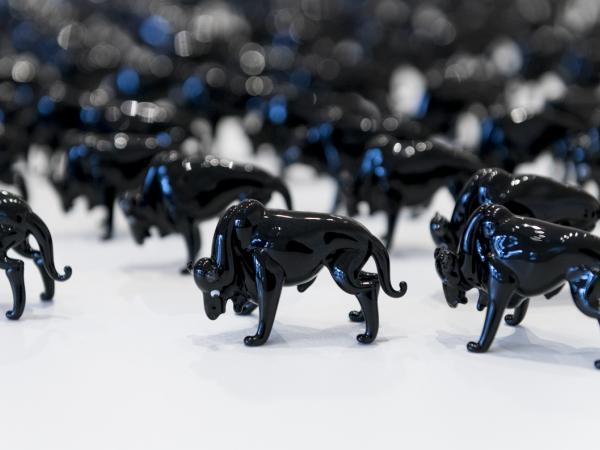MUSEUM EXHIBITION
The visual arts exhibition features work by artists who consider both the history of refugees in the U.S. and the contemporary refugee crisis.
Born in Tehran and now based in California, Shiva Ahmadi draws on the artistic traditions of Iran and the Middle East to consider contemporary political events. The exhibition features her works on paper and a hand-drawn animated film, Ascend, which Ahmadi recently completed in response to the Syrian refugee crisis.
Tiffany Chung has devoted much of her career to examining migration and displacement resulting from political and environmental causes. Her installation project, Tomorrow Isn’t Here, considers the Dust Bowl and the resulting migration of enormous numbers of people across the U.S. in the 1930s. Tomorrow Isn’t Here asks viewers to think about the ways complex relationships between political, economic and environmental factors can trigger refugee crises.
Fazal Sheikh is an artist who uses photography to document the lives of people living in misplaced or marginalized communities around the world. The exhibition includes a selection of portraits he made in Afghan refugee camps in Pakistan and in camps in Kenya, where he began making photographs in 1992 when civil wars in Ethiopia, Sudan and Somalia led refugees to flee into camps that still exist today.
Los Angeles-based artist Angie Smith has spent several years making portraits and recording the stories of refugees who have resettled in Boise, Idaho, after leaving the Democratic Republic of Congo, Sudan, Myanmar and other countries. Her work highlights the visual contrast between the backdrop of Boise and the people she photographs, many of whom dress in traditional clothing, pointing to the challenges refugees face in adjusting to a new country while also capturing their successes as they make Boise their home.
